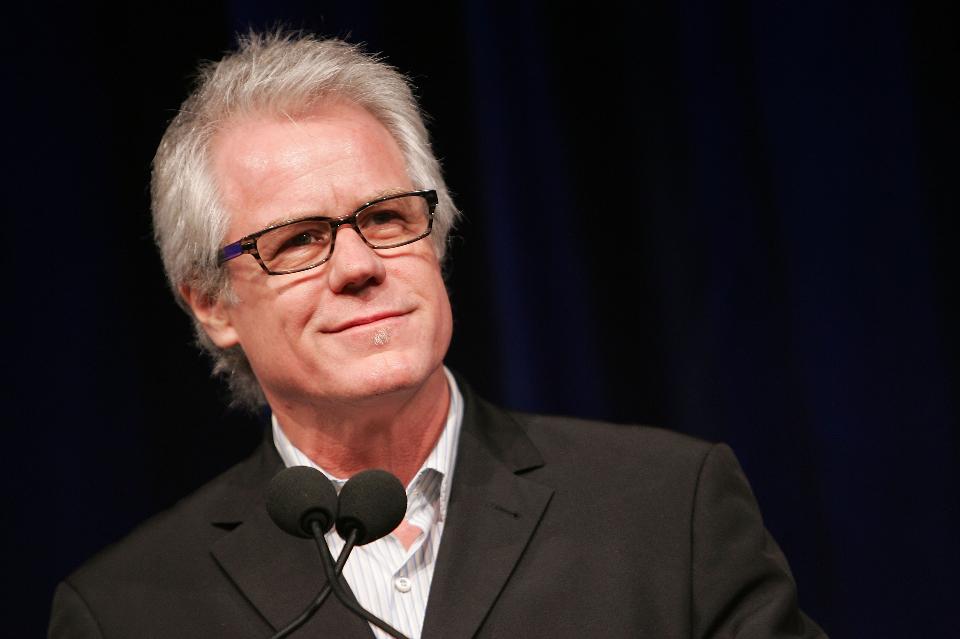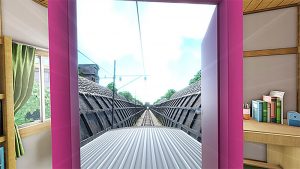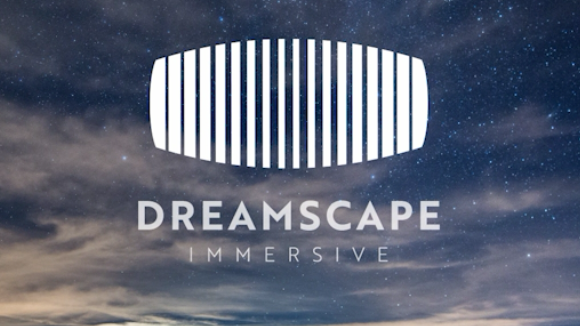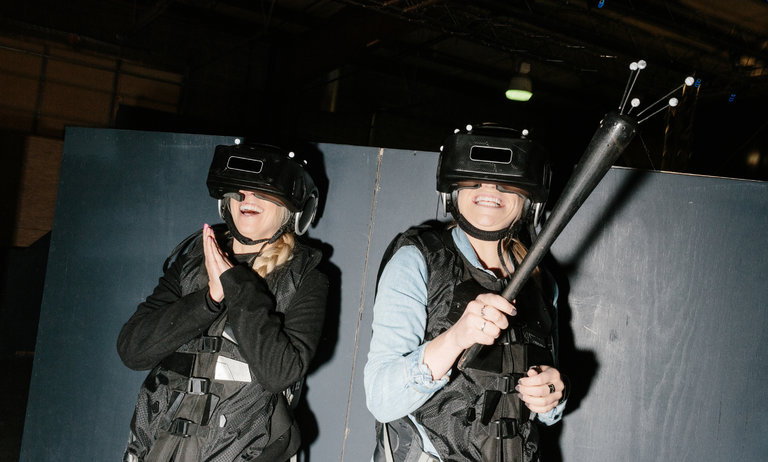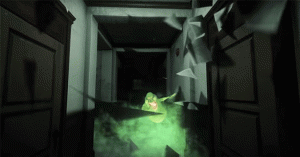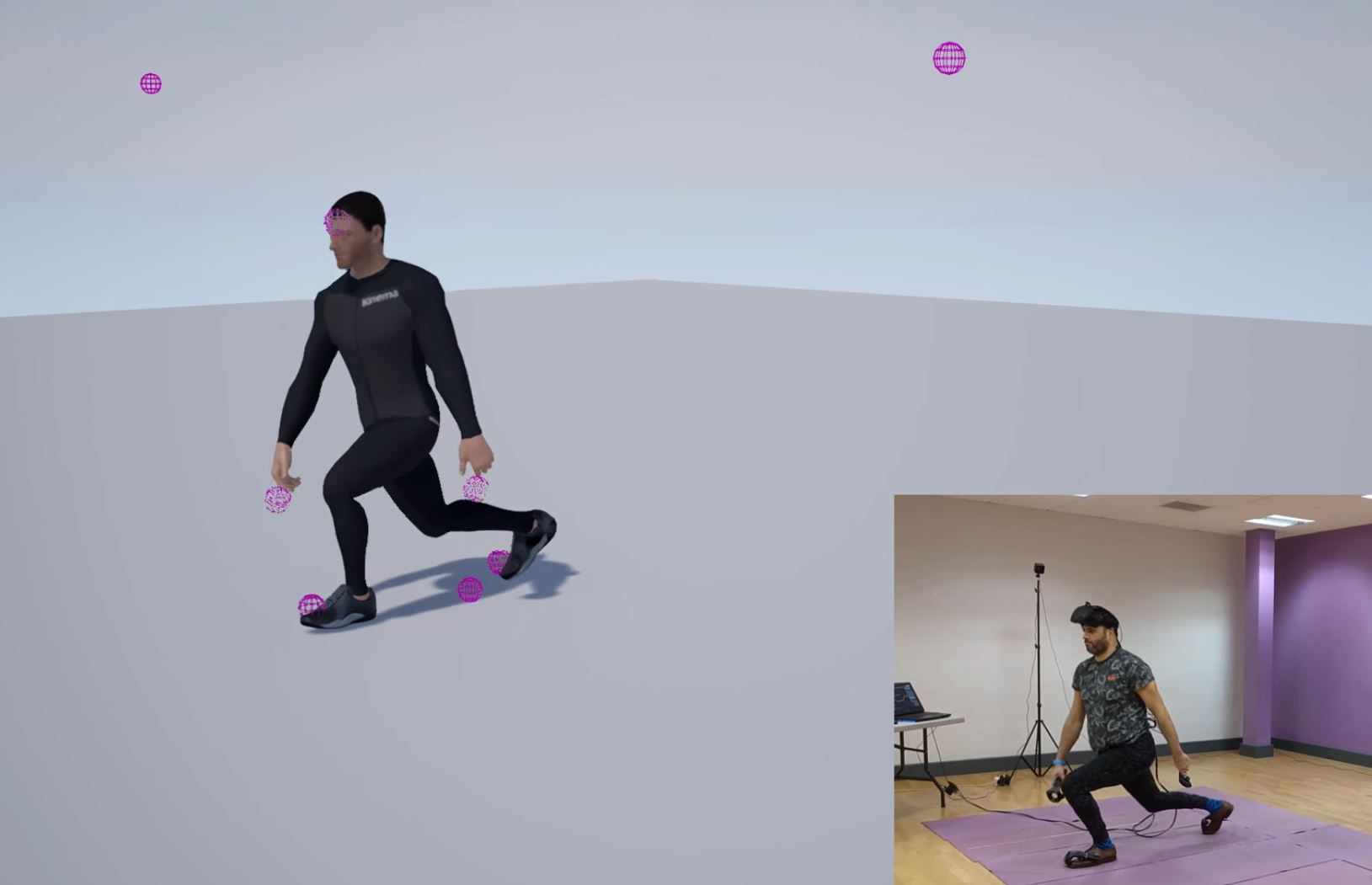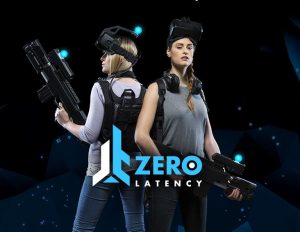First of all, I would like to call out and congratulate Universal Orlando for putting out the money to create The Repository. The Repository represents an entirely new form of transmedia story telling which is now only in its infancy. To go out on a limb, shell out what looks to be a phenomenal amount of money and subject guests to not only a very pricey ticket ($50) and entirely new experience really take guts. It must have been a logistical nightmare to put all of the components together. For the most part they did a great job. They pulled it off and got it done! The experience itself had its good points and bad. All the same the experience was complete and most of the people coming out of the experience were rewarded with a good time, which is really the ultimate goal.
The staff and the presentation were outstanding. The folks at the beginning of the experience were kind and friendly and offered an almost pub-like waiting area. After the experience, we had the opportunity to talk with the person who was in charge of IT for the experience. (If any computer system went down during the experience, her job was to get it back up.) Sarah was extraordinarily accommodating for the barrage of questions we sent at her. The experience executed without flaw and flowed like clockwork. What is most impressive is that this is one of the first times Virtual Reality has been integrated with immersive theatre and they were able to make it work.
As with everything in Universal Studios, the presentation of the overall experience was outstanding. The rooms were expertly dressed and detailed. The props and sets were taken right from a movie shoot. All of the costumed performers and all of the sets were professionally dressed.
The quality of the VR experience was not outstanding. This could be one of two reasons. The first is that the Head Mounted displays(HMDs) were untethered. This of course means the headset could only produce as much GPU power as the small device could pump out. The HMDs did not appear to be of GearVR quality . This could mean they were using something a bit more primitive and a bit more military grade. The second reason is that the experience may have been assembled very quickly not utilizing a commercial game engine. Being very stable is very functional but at the cost of quality.
The quality of the tracking was not inspiring. To someone unfamiliar with VR technology it may have been acceptable. However, once you become familiar with some of the more modern tracking devices, such as the Vive, you start to become very sensitive to a less than perfect tracking. The latency of tracking information could have contributed to this less that awesome VR experience.
Inside the VR experience were three “rooms”. They did a very good job maintaining a consistency with all of the three rooms. As I mentioned before, while the quality was less than thrilling, it was consistent. Consistency through the experience is essential for maintaining immersion. This the Universal folks did very well.
Regretfully, the VR experience did not maintain consistency with the overall attraction experience. The sets, props and interactors were of such a high production level it was almost a disappointment to be in the VR experience. To me this is the hardest attribute to achieve. I would almost have suggested to Universal to make the entire experience in VR in order to maintain the level of consistency. That would have made the VR portion infinitely more complicated. One would have to ask if the VR portion was even necessary and could it have been pulled off by just adding three more props room to the experience and ignoring the VR. That is something only the Universal folks can answer.
I love the fact that the experience was so heavily integrated with interactors. The actors themselves provided wonderful performances. This really helped with the overall immersion. Regretfully all of the performances felt as if they were following tight scripts and would not improvise. Of course there were breaks to keep unruly participants in line. Other than those situations the interactivity was extremely one way. I feel this was a lost opportunity for the participant to collaboratively build the story from their own perspective. There seemed to be no interaction in the VR experience. I was lucky enough to go into the VR experience by myself and they sent an interactor to go with me. Other than seeing an avatar representation of his character (a simple mask) there was no opportunity for collaboration. My companions who went through the experience together remarked that while they could see each other’s avatars, there was no real opportunity for collaboration and co-participation. I think if Universal attempts to build Repository 2.0 this should be one of their early objectives. The collaborative experience either through co-participation or with an interactor is what will make this new media really succeed.
The sound in the VR experience was a big disappointment. Very simply the sound was cacophonous and contributed to the overall confusion of the situation. I heard commands being sent to me but was really unsure if I was being heard back. ( I did try to communicate back :)). Maybe further investigation in binaural sound will help alleviate the overall confusion this created.
I had problems with the overall story and theme. Honestly, I was overwhelmed and spent most of the time wondering just what was going on. I was lost in the story and ultimately the objective. There were some recognizable components but then they seemed to get lost in the blur of activity. (I never realized how cliché the iMyth experience was until I participated in The repository) I was overwhelmed. If the stories flowed a bit more consistently I feel the experience would have been much better.
Reinforced by a military sub-element(I never really understood what or why) the entire story was extremely linear and felt as if it were on very tight rails. This killed the interactive storytelling aspect for me. I wanted time to take in the experience, converse with the interactors, explore the sets and the VR worlds and in general immerse myself into the story world. I suppose this would be too cost prohibitive and prevent the numerical throughput required for Universal to make a profit. I still can’t help feel I only received a small sampling of the ultimate potential. Maybe this is enough to make folks want to come back for more. However, the $50 admission price tagged on to the already expensive HHN admission left me feeling unsatisfied. I wanted to understand more about this story world but regretfully will never obtain.
During the “play” and VR portions of the experience, the interactors could touch and physically interact with me but I could not touch them. I understand this limitation from the immersive theatre aspect. However, I really wanted to touch things in VR. My hands kept going through objects in the scene and this broke the immersive feeling for me. I personally had no problems being touched by the interactors within the VR experience. However, as we found out later, this upset other participants immensely. Regardless, I still wanted to touch objects while in VR.
All in all, I am very happy to have gone through Universal’s Repository. This is the first venture into this new immersive transmedia storytelling format and they were successful in pulling it off. Great Job Universal! Of course I have my criticisms but they do not discount the fact they were able to combine the myriad of logistics to create a cohesive experience. I hope my criticisms may provide a better and more rewarding experience next year if they decide to do this again. I very much hope they do!

